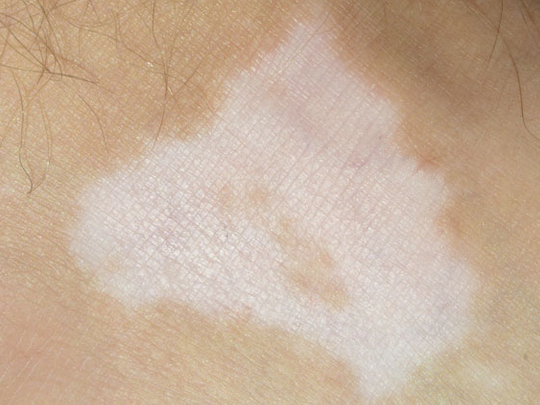
A reader asks: I am 30-year-old man working as an office boy. I have a white patch on my leg. I am poor man, so please advise me on the medication.
Dr Dinesh Kartha, Ministry of Health Approved Naturopathic Medicine Practitioner, Chief Consultant and Managing Partner, Aura Alternative Medicine Center, Sharjah, replies: A white patch on skin, generally, is not a cause for concern. Much more details are required to suggest proper treatment for your condition. You have not mentioned the size or exact area where the white patch is located.
Skin discoloration can be triggered by a number of causes. Many skin diseases, including psoriasis, eczema and vitiligo may cause a light or white patch on skin or other discoloration. The treatment strategy can be decided only after analyzing the exact cause. I would suggest you to meet a Naturopathic Doctor to confirm the condition you have.
Anyway I am suggesting the following remedies presuming your condition is vitiligo. White patches that develop on many areas of one's skin are usually caused by vitiligo.
- Vitiligo is a condition characterized by the loss of skin pigment called melanin, which is normally produced by cells called melanocytes. Discoloration is caused by the destruction of the melanocytes, but the exact cause is not known.
- Vitiligo is thought to be an autoimmune problem in which the body attacks its own pigment cells and kills them. There is often a precipitating factor such as stress or illness in a predisposed person.
- 30% of people with this disorder have a family history of vitiligo.
- In addition, there is often a family or personal history of other connective-tissue or endocrine disease also related to an immune problem. These include alopecia areata, thyroid disease, diabetes, Addison’s disease, and pernicious anemia.
If you have vitiligo, particularly if you have fair skin, use a sunscreen with an SPF of at least 30 that protects against both UVA and UVB light to protect your skin from the sun's harmful rays. Sunscreen helps protect your skin from sunburn and long-term damage. Sunscreen also minimizes tanning, which makes the contrast between normal and depigmented skin less noticeable.
Opaque cosmetic cover-ups may lessen the appearance of the white patches and help you feel better about yourself, especially if your vitiligo patches are on exposed skin. You may need to experiment with several brands of concealing cosmetics before finding a product that blends best with your normal skin tone.
Supplementation with folic acid, vitamin B12, and vitamin C may help to improve the condition. Gingo supplements also are found to be effective.
By testing for nutritional deficiencies, toxic elements, the level of free radicals and understanding the mental and emotional state when the vitiligo began, we can start to develop a targeted program to help address the cause.
In some cases, poor digestion leading to mal-absorption of nutrients is also a factor in the development of vitiligo. Arsenic is a toxic metal that may also play a role in the development of vitiligo. Vitiligo is related to occupational chemical exposures or people who react to hair dyes, deodorants, spray perfumes and detergents. By removing the toxic chemicals that people are exposed to, and starting a cleansing or detoxification regimen, the skin can start to heal properly.
Practicing Yoga and Relaxation Techniques to reduce stress levels also would be advisable.
Disclaimer: This blog is a conversation and is not an alternative for treatment. The recommendations and suggestions offered by our panel of doctors are their own and Gulf News will not take any responsibility for the advice they provide.








